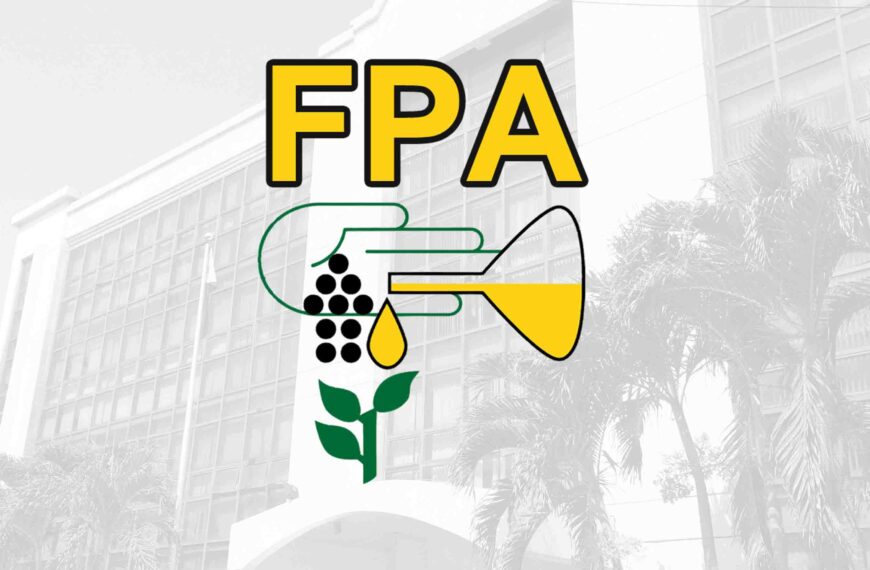December 21, 2021 | Quezon City – The hike in fertilizer prices is a global trend and not in the Philippines alone. Economic analysts and fertilizer companies in the United States (US) shared that the trend will continue until 2022.
Expecting that prices won’t drop soon globally, farmers are now on the verge of considering decisions to catch-up with the crisis.
World energy prices influences fertilizer prices
Kreg Ruhl, Senior Market Manager at Growmark, an agricultural supply cooperative based in Illinois, USA, said that world energy market primarily influences price of fertilizer. Ruhl believes fertilizer will remain expensive until energy prices drops down.
According to Purdue University researcher and Ag Economy Barometer author Michael Langemeier, prices on all inputs, not just fertilizer, are at record highs, climbing a historic average of at least 12% across commodities. He said that `nitrogen sources used in fertilizer are tied to oil prices, and the more volatile the oil market is, the more the price of fertilizer will fluctuate.´
Shifting cropping patterns in 2022
A white paper published on farmdocdaily.illinois.edu titled `2022 Planting Decisions, Nitrogen Fertilizer Prices, and Corn and Soybean Prices,´ written by agricultural economists from the University of Illinois, suggests that farmers may change their cropping decisions for next year considering higher input costs.
Patrick Quaid, R.J. O’Brien & Associates commodities also said that production costs would influence decision of farmers on what crop to raise. A decrease in corn production, which requires expensive nitrogen fertilizer requirement such as urea, would be reduced.
`If farmers decide to alter their usual rotation for 2022, they may switch to a crop that requires less nitrogen fertilizer, like soybeans,´ Quaid said.
Quaid further states that the automotive manufacturers struggling to produce pickup trucks because of supply-chain shortages, farmers may shift their spending, for tax reasons, to the higher priced fertilizer. `However, if fertilizer supply remains the main worry, farmers will have no choice but to switch to planting more soybeans,´ Quaid explained.
Brazil is also expected to plant more soybeans, which could add to world supply, according to Bryan Doherty, Vice President of brokerage solutions and senior market adviser at Total Farm Marketing by Stewart-Peterson. `From a marketing perspective, it may be a good year to defend soybean prices soon (now) through either put purchases for next fall’s production, or forward sell and buy calls to re-own. This creates a balance of cash sales and the ability to participate in price rallies,´ Doherty stated.
Alternatives
The skyrocketing fertilizer market now made producers to either practice crop rotation next year or to lessen their acquisition of costly synthetic fertilizers to reduce farm expenses. Some of the suggestions include the use of chicken manure as an alternative nutrient source.
Chicken manure as alternative
Daniel Andersen, associate professor at Iowa State University, says that some manure will have more phosphate or excess nitrogen, when what the crop really needs is potassium. When deciding whether or not to spread manure, it’s important to determine the type of manure necessary for the particular crop type and current soil nutrient makeup. For example, if a farmer has planted a crop that needs a lot of phosphorus, but has soil that is low in phosphorus, they should shop around for nitrogen-rich manure, like poultry.
Dan Luepkes, a farmer in Oregon, Illinois, supports the idea that chicken manure has been effective on their fields.
`Natural fertilizers have no added salt, so they’re more usable for the plant. Chicken manure also contains some additional micronutrients and calcium that you won’t get in synthetic fertilizers unless you buy all those additional micronutrients,´ Luepkes shared.
Luepkes further narrates that in the soil tests he runs after using manure on his fields, he is seeing an increase in microbiology and insect presence, which brings additional carbon to the soil and increases the overall soil health, something Andersen recommends before purchasing manure.
Meanwhile, Anderson recommended that farmers need to conduct soil test in their farms to know exactly which nutrients their soil needs and what kind of manure to look for, noting that the nutritional value of manure can change from farm to farm and from season to season. From this, he recommends requesting a manure sample from the farm before farmers will buy.
Use of technology
Once a farmer has secured fertilizer, using it to its fullest potential is imperative to getting his money’s worth. Variable-rate technology allows producers to optimize the spreading and application of fertilizer in specific zones, ensuring less is wasted, exclaimed Madelyn Ostendorf of the agriculture.com.
Matthew Lau, global product manager of scripting for The Climate Corp., added that automatic zone creation gives growers a much higher level of flexibility and accuracy to optimize inputs. `It also allows growers to test different layers and different hypotheses and compare those to determine which one they feel will be the best choice to move into that next season. We know every year is different, and every year brings its own set of challenges,´ she said.
References
Abbott, C. 2021. More farmers worry about large increases in input costs. Retrieved
https://www.agriculture.com/news/business/more-farmers-worry-about-large-increases-in-input-costs
McGinnis, M. 2021. Factors expected to drive the 2022 corn market. Retrieved
https://www.agriculture.com/markets/factors-expected-to-drive-the-2022-corn-market
Ostendorf, M. 2021. What is going on with fertilizer prices? Retrieved
Fertilizer and Pesticide Authority (FPA) Online ISSN: 2815-1674
Published by the FPA Information and Communications Team


